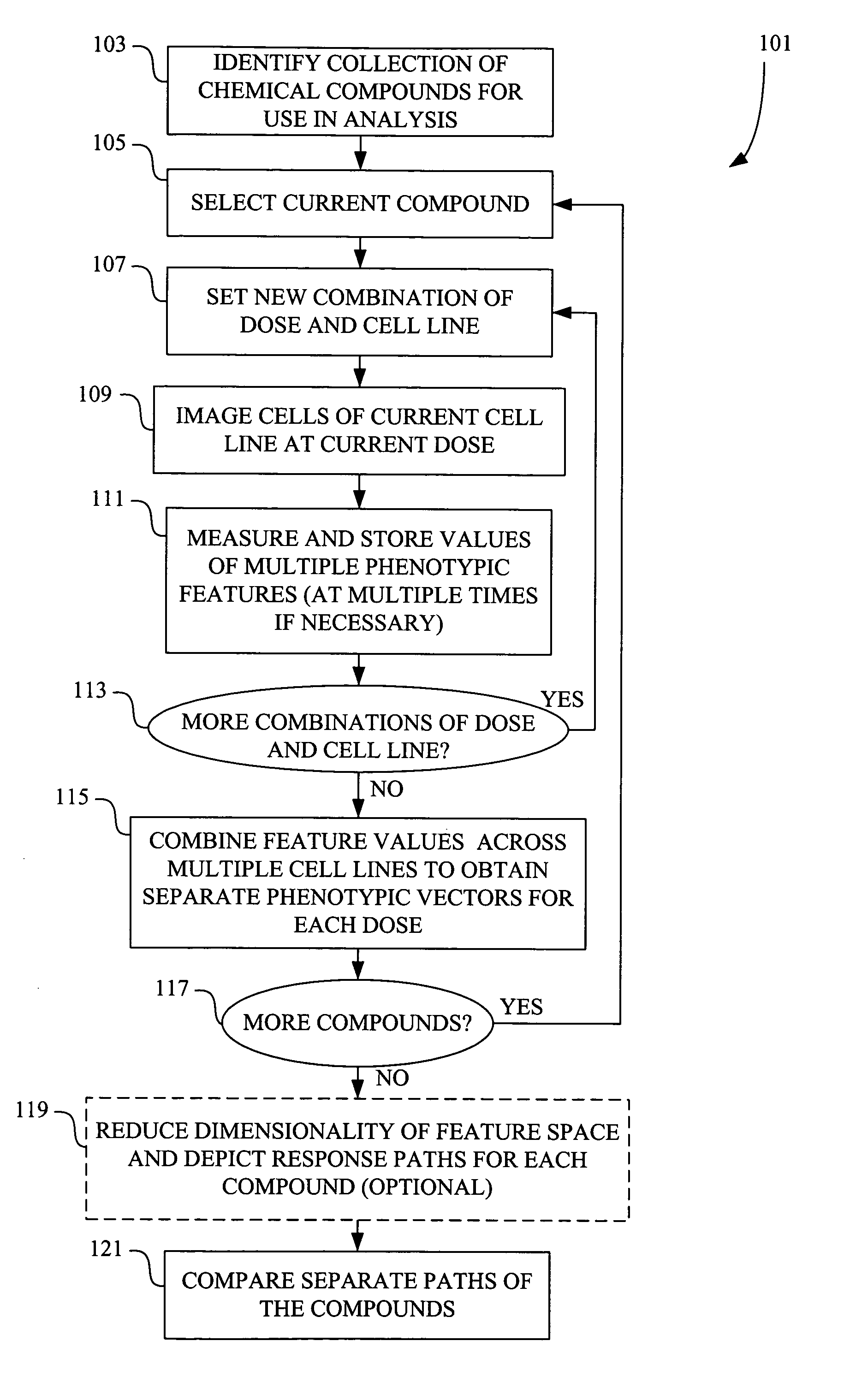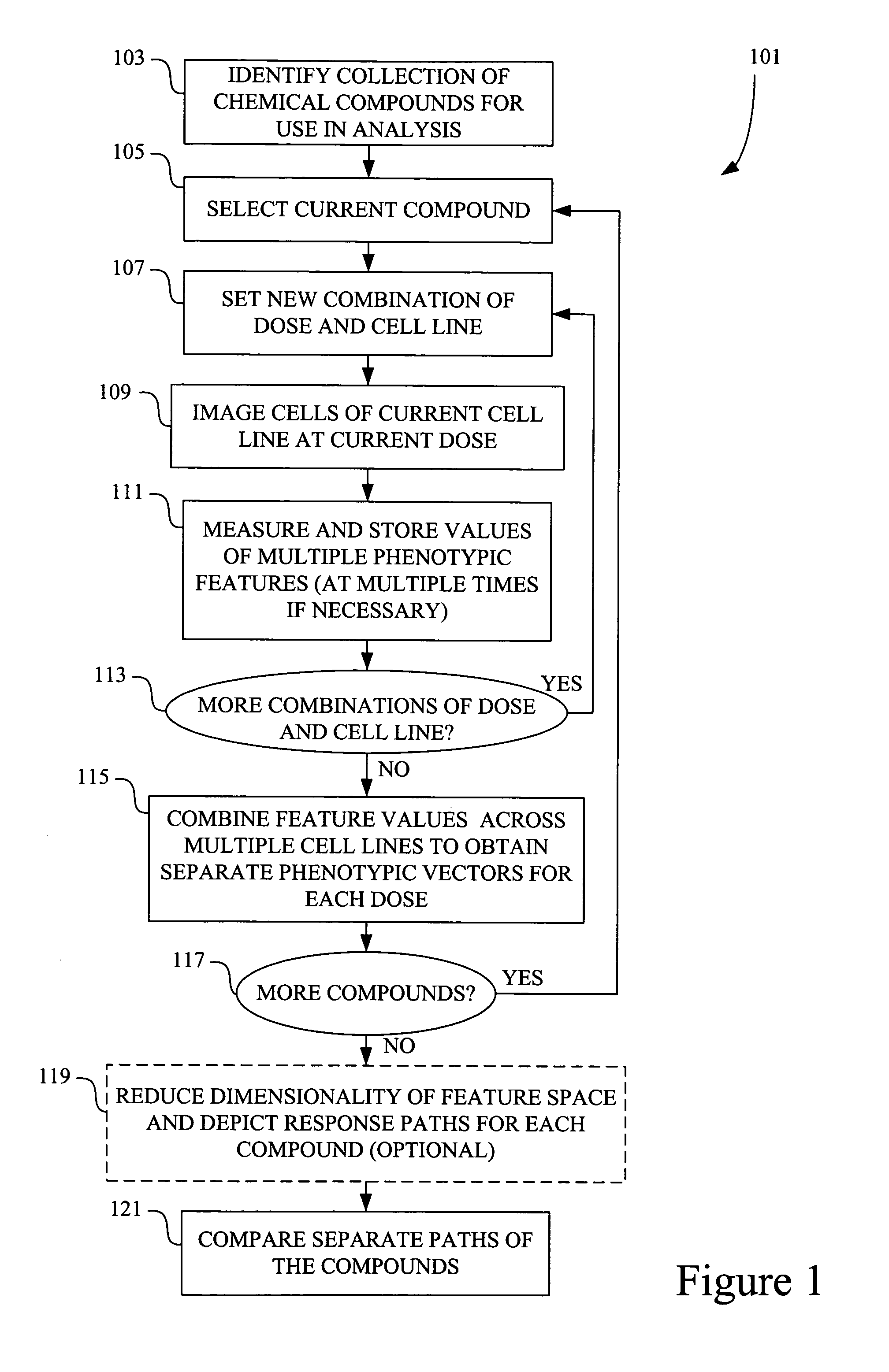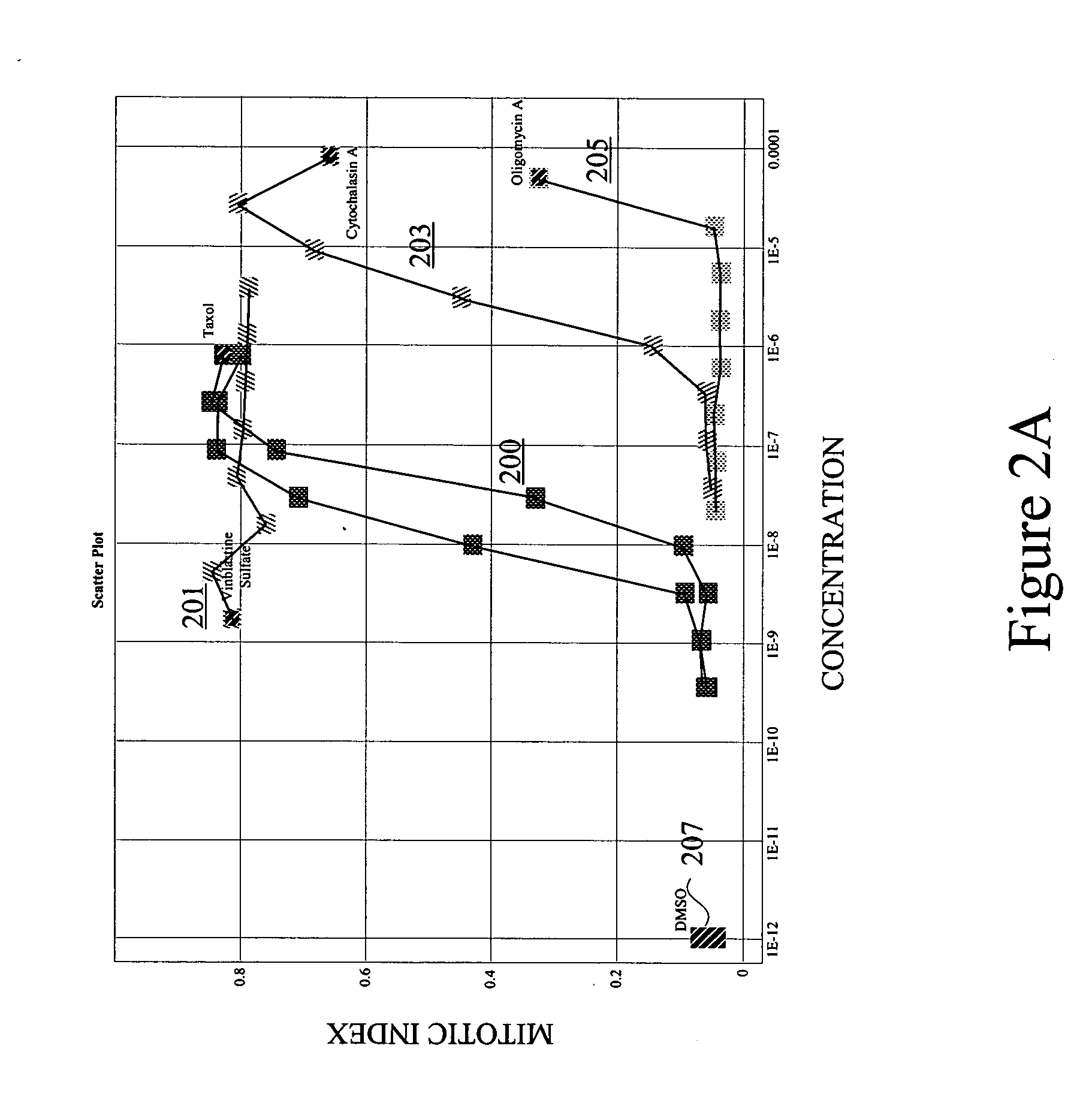Characterizing biological stimuli by response curves
a response curve and biological cell technology, applied in the field of biological cell response characterization techniques, can solve the problems of rare and often difficult identification of purified substances having desirable bioactive properties, the vast majority of “hits” generated by such techniques do not possess the right combination of properties to qualify as therapeutic compounds, and are typically found to fail in some regard
- Summary
- Abstract
- Description
- Claims
- Application Information
AI Technical Summary
Benefits of technology
Problems solved by technology
Method used
Image
Examples
Embodiment Construction
[0038] Introduction
[0039] The present invention allows for comparison of response paths in multidimensional space. It also allows for comparison of a singular response (signature) and a response path. The response path(s) may span various levels of a stimulus, with each point in the path representing a different level of the stimulus. For example, each point might represent a different concentration or dose of chemical compound. Alternatively, each point in the path may represent a different time after initial exposure to a chemical compound. Other examples are presented below. Each point (signature) in the response path typically contains multivariate information about a cell's or population of cells' response to a particular level of the stimulus.
[0040] In many embodiments, the multivariate signatures of stimuli contain some phenotypic information about the cells affected by the stimuli. Such phenotypic information may provide morphological details, texture and intensity measure...
PUM
| Property | Measurement | Unit |
|---|---|---|
| radius | aaaaa | aaaaa |
| separation distance | aaaaa | aaaaa |
| common radius | aaaaa | aaaaa |
Abstract
Description
Claims
Application Information
 Login to View More
Login to View More - R&D
- Intellectual Property
- Life Sciences
- Materials
- Tech Scout
- Unparalleled Data Quality
- Higher Quality Content
- 60% Fewer Hallucinations
Browse by: Latest US Patents, China's latest patents, Technical Efficacy Thesaurus, Application Domain, Technology Topic, Popular Technical Reports.
© 2025 PatSnap. All rights reserved.Legal|Privacy policy|Modern Slavery Act Transparency Statement|Sitemap|About US| Contact US: help@patsnap.com



